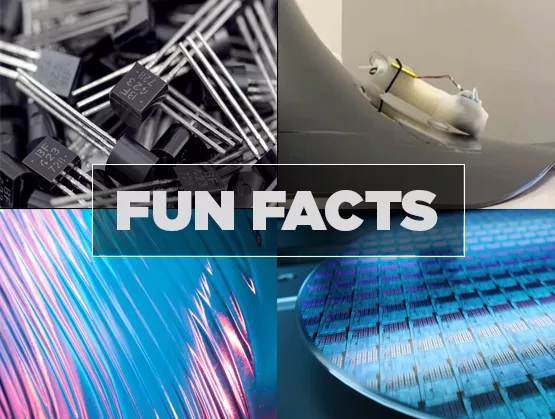
What’s a sextillion? It’s the number one followed by 21 zeros — outnumbering the stars in the Milky Way. Industry analyst Jim Handy estimates that 13 sextillion transistors have been manufactured by the chip industry since the first one sprang to life in late 1947. Today, as modern graphics and artificial intelligence chips each contain billions of transistors, the total continues to build at an astronomical rate.
Inspired by nature! After studying how earthworms navigate their environments, a team of engineers at GE Aerospace Research Robotics, with funding from SEMI FlexTech, developed the Sensiworm (Soft ElectroNics Skin-Innervated robot worm). The robotic worm can be used for equipment inspection and repairs, even chemical leak detection, speeding turnaround times during maintenance.
Can glass solve a packaging bottleneck? As processors become larger and more complex, their ability to communicate with the rest of the computer will become a chokepoint. Glass-based substrates might provide the answer. The robust mechanical characteristics of pure glass, which doesn't warp, permit the creation of larger package sizes while retaining high production yields. A glass packaging initiative may soon turn an academic challenge into a commercial solution.
Chips go on an energy diet! Although chips may be approaching the atomic level, the total number of microelectronic devices consumes an outsized amount of energy. By 2030, projections indicate that microelectronics could account for a whopping 20% of the world’s energy consumption. Scientists at Argonne National Laboratory plan to help cut the chip industry’s energy usage issue by leveraging Atomic Layer Deposition (ALD) to redesign microchips with atomically precise Molybdenum disulfide (MoS2) monolayer films instead of silicon.

Do you have a fun fact to share? We invite SEMI members to submit a fun fact about the industry or their company. We’ll consider your tidbits for inclusion in future blog articles and/or posting on social media. Complete our survey form or email semifoundation@semi.org.
Learn more about the SEMI Foundation and its initiatives to promote industry awareness and help provide a path for those interested in rewarding careers in microelectronics.
Follow the SEMI Foundation on LinkedIn, Instagram, Twitter and Facebook.
Margaret Kindling is Senior Program Manager for Diversity, Equity, and Inclusion at the SEMI Foundation. She promotes inclusion and diversity via Foundation activities such as Women in Semiconductors, Semiconductor PRIDE and SEMICON West Workforce Development Pavilion programming.